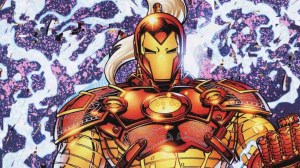The thing everyone talks about when it comes to DC Comics’ Rebirth line is the bi-weekly shipping. That is a big deal and it shouldn’t be dismissed. It has altered the habits of creators, retailers, and readers in surprisingly positive ways. Yet it’s only one element of change in a wave that has reshaped DC Comics and superhero comics to be more exciting for both longtime readers and newcomers alike. One of those overlooked alterations is the introduction of the Rebirth one-shot.
Videos by ComicBook.com
As DC rolled out their new line over the course of about three months, each new bi-weekly series was preceded by a single issue with the same title. This resulted in two #1’s for every title and a fair amount of confusion, but it wasn’t a bad idea. The heart of the concept was that in addition to the launch of a series there would always be a self-contained comic to pitch readers on the commitment of showing up every few weeks to read more. These one-shots would be released to provide everything a reader could want for $2.99 and hopefully hook interested consumers to discover even more stories.
While mainstream superhero comics have plenty of spinoffs and other novelties, this was still a fresh concept and it took some time for adjustment. Many of the initial Rebirth one-shots were very similar to the regular series debuts. Oftentimes they felt repetitive or unnecessary, but that doesn’t mean the concept itself was flawed. In the lead up to a new Justice League series, Steve Orlando and Jody Houser have written four Rebirth one-shots of new members. In doing so they’ve avoided the pitfalls of previous tries and cracked the code of the Rebirth one-shot. This is how this concept is meant to function and why it’s another great contribution of DC Comics’ biggest relaunch.

Every Comic Is Someone’s First Comic
This is a phrase that is often repeated, but even more often forgotten. When superhero comics are measured in hundreds of issues and decades of continuity, the concept of accessibility can become a bit foreign. The concept of the Rebirth one-shot is something that reiterates the importance of giving new fans an entry point though, and it is something that all four of the new Justice League one-shots accomplish.
Stories of The Atom, The Ray, Vixen, and Killer Frost take characters that would typically be defined as B- or C-list and provide them proper introductions to anyone who might happen across these comics. While there are references to other events and moments within some of these issues, none rely upon prior knowledge. They’re designed to provide a complete story within the context of the comic itself. That doesn’t just mean a reader can lack awareness of DC Comics either; these comics tell a complete story.
It’s clear there’s more to come after each of these one-shots: a world to explore and challenges to be faced. Yet on their own they provide a journey and climax for the characters. A pivotal moment is achieved and these men and women become heroes of their own accord. That’s far more exciting than the promise of what is to come. By the end of these one-shots readers have already taken a ride, and that’s a real incentive to buy more tickets.
Introductions Matter
Each of the Justice League one-shots written by Orlando and Houser are origin stories of one stripe or another, but that’s not what is meant by introductions. Introductions are not just how someone became who they are; it’s how you meet a character, how you discover a world, or how you find a story. Each Rebirth one-shot is a chance to introduce not only a single hero, but the concept of DC superhero comics to a new reader. They are the very first handshake in an interview process that could produce a lifelong fan or someone who opts out of what seems like a curiosity.
What is accomplished with these one-shots is a successful first interview that delivers on the promise of a single encounter and makes those reading it want to come back for more. Take the story of The Ray, for example. It follows the path of a young man from childhood to his introduction as a superhero. There are oddities as he’s something of a National Enquirer oddity, but it is ultimately the tale of someone kept away from society for being different. That relatable quality is what ensure this story sticks. His journey to discovering superpowers is about acceptance and doing what is right. It is the kind of tale that inspires and makes you fall in love with a hero and it is all instilled in just 20 pages. That’s the sort of handshake you don’t soon forget.

Standing Out at a Glance
Orlando and Houser are doing an excellent job of crafting stories that manage to both satisfy and entice upon their final page. Yet the delivery of a comic is only partially determined by writers. A large part of what has made these new Rebirth one-shots work is that an excellent set of artists have been utilized to show off what is great about the characters and provide excellent value in a single story.
The Killer Frost comic offers a prison drama with an insanely evil warden that plays out with a straightforward manner in which Mirka Andolfo makes the threats present on each page. Of the four Vixen might possess the most impressive re-premiere though. Jamal Campbell must show how the same body possesses all of the powers of the animal kingdom and does so by matching forms and movement. When Vixen pumps her foot into the ground with the force of an elephant, he matches the two bodies incredibly well. It’s in the art that you come to understand both Vixen’s power and her strength. These one-shots are not only opportunities to sell characters and concepts, but to do so with creators and styles who might not fit well within a monthly or bi-weekly series.
Reviewing the four Rebirth one-shots leading into the new Justice League ought to be a requirement for future creators tasked with tackling these unique issues. They reveal both why they are a great idea and how they can be executed successfully. There is a careful balance within each of these that connects them to new titles, but allows them to stand apart at the same time. Orlando, Houser, and all of their collaborators are seeking to tell stories that have an impact without any additional context. They are telling stories of heroes who can inspire us upon meeting them, tell us all we need to know, and do so with grace and beauty. Really, that’s something all superhero comics ought to strive for.








